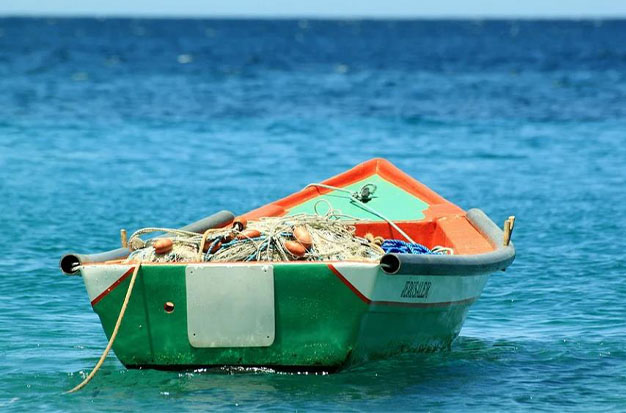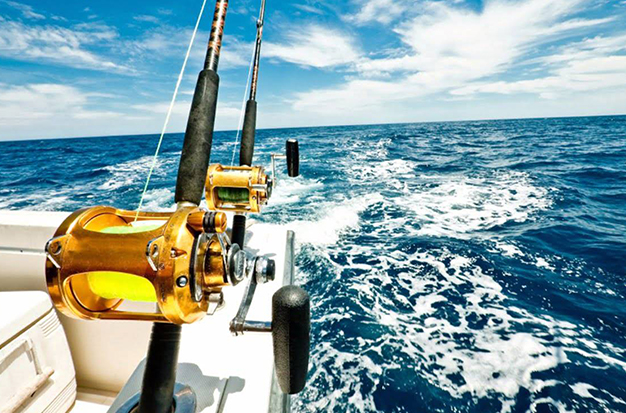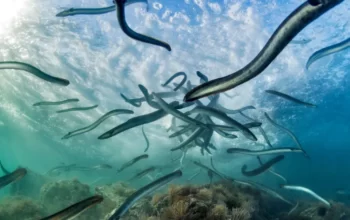The largest fish in the world can be found in deep seas. Fishermen will travel the globe in an effort to catch a powerful tuna or a gleaming Dorado. Deep-sea fishing is a sizable leisure and tourism sector that sustains fishing guide services globally.
Table of Contents
What Is Deep-Sea Fishing?
Deep sea fishing is a type of fishing that involves traveling through the Intercoastal Waterway to the deep seas of the Atlantic Ocean, which is far from shore. To be deemed a deep sea fishing region, the water depth must be at least 30 meters. If taking a boat trip makes you a little uneasy, prepare ahead of time and have the right prescription on hand. This method of fishing is frequently referred to as a sport, offshore, or large game fishing.
Is Deep-Sea Fishing Difficult?
Generally speaking, deep-sea fishing requires higher fishing expertise. On a charter, though, even novice and first-time fishermen can succeed. The knowledge and willingness of the captain and crew play a significant role in the charter’s success.
You can go to a nearby deep-water fishing spot and either catch tons of fish or almost none. Experience is what makes a difference.
Deep sea fishing techniques typically allow you to target a small number of fish species or a large variety of fish. Depending on the fish you choose to target, you can trawl or chum. While trawling pulls your line and lure or bait through the water, chum fishing draws predatory fish to one area. Some fish, such as tuna, are attracted to movement, while others rely on their nose to find food.
Different Types of Deep-Sea Fishing
Half-Day Trips
The cheapest option for sport fishing trips is usually a half-day tour. These shorter tours typically don’t go too far from the land because it takes a long time to venture way out into the ocean.
Full-Day Trips
Full-day fishing trips are a common type of trophy fishing. These charter boats leave the shore early in the morning and sometimes return after sunset. Full-day trips give anglers a better chance of trying different methods of deep-sea fishing.
Night Fishing Adventures
Some kinds of fish only bite at night. To catch these fish some guides lead night-time deep-sea fishing tours.
Multi-Day Excursions
These deep-sea fishing trips are the creme de la creme. While they are the most expensive, they also offer the widest variety of opportunities. Fishers can expect to fish during different times of day with multiple methods. This variety gives anglers the best chance to catch their dream fishes.
What Kinds Of Fish Do Fishermen Catch?
The pelagic zone of the ocean is home to the majority of the sought-after deep-sea fish. The entire ocean that is not near a boundary is referred to as the pelagic zone. The seafloor, the ocean’s surface, and any coastline all fall within these borders. Typically, deep-sea fishermen don’t target the genuinely bizarre, deep-ocean creatures that inhabit the seafloor. Photosynthetic plankton is the foundation of the pelagic ecology. Because they require sunlight to survive, these plankton are found close to the top regions of the pelagic zone. Depending on the abundance of plankton, pelagic fish will migrate to various depths or areas.
The pelagic zone of the ocean is home to the majority of the sought-after deep-sea fish. The entire ocean that is not near a boundary is referred to as the pelagic zone. The seafloor, the ocean’s surface, and any coastline all fall within these borders. Typically, deep-sea fishermen don’t target the genuinely bizarre, deep-ocean creatures that inhabit the seafloor. Photosynthetic plankton is the foundation of the pelagic ecology. Because they require sunlight to survive, these plankton are found close to the top regions of the pelagic zone. Depending on the abundance of plankton, pelagic fish will migrate to various depths or areas.

- Western Coast
People enjoy fishing for yellowtail, sturgeon, albacore tuna, rockfish, barracuda, white sea bass, and lingcod along the coasts of California, Oregon, and Washington. With a variety of deep-sea fisheries, the ocean surrounding the Channel Islands in California is a particularly stunning location to fish.
- Eastern Coast
People capture bluefin and yellowfin tuna, cod, striped bass, and mackerel off the East Coast of the United States. Even large cities like New York and Boston allow residents to travel for these purposes.
- Gulf of Mexico
A popular location for deep-sea fishing is in the Gulf of Mexico. From Florida, Texas, Mexico’s east coast, and the Caribbean islands, anyone can enter the Gulf of Mexico. Sport fishing is interesting in this gulf since it is a body of water with a particularly diversified aquatic life. Dorado, shark, king mackerel, red snapper, and Spanish mackerel can all be caught by fishermen.
- Alaska
Alaska is world-renowned for its fishing. This massive state has plenty of open oceans to choose from. Deep-sea fishers can expect to fish for massive halibut and salmon, as well as crab.
- Hawaii
Who wouldn’t want to fish in Hawaii’s tropical waters? Hawaii is a great place to start if you want to get to the truly wide ocean quickly because it is the only island for hundreds of miles around. Species like the Yellowfin ahi tuna, big blue marlin, dorado, sailfish, swordfish, and wahoo are among the spectacular fish that may be caught in Hawaii.
Does Deep-Sea Fishing Harm Fish Populations?
Deep-sea fishing only makes up a small portion of the total amount of fish taken worldwide. Recreational fishermen kill less than 1% (by mass) of all marine fish each year. The vast majority of the world’s harvest is taken by industrial fishing fleets, with artisanal subsistence fishermen taking a variety of shares depending on the fishery. An extreme example is the Bahamas, where 30% of fish caught from the ocean are for recreational purposes.
Even so, some scientists are worried about the types of fish and specific fish that recreational fishers target, despite the fact that recreational fishing doesn’t remove a significant volume of fish from the ocean. Particularly concerning is the trophy fishing of sharks from endangered species.
Finally, experts lack information on the types of fish and quantities taken out of the waters by recreational fishermen outside of the United States. Their projections range from 0.5 million to 10 million tons annually! It is difficult to determine how much recreational fishing affects fish populations without this information.
What You Need to Bring?
- Sunglasses with Polarization are a must. The light reflecting off the lake can be glaring, give headaches, or make you feel more queasy. You can fish longer and more comfortably with polarized sunglasses since they effectively filter much of the light that is reflected.
- Be aware of the services the charter offers and excludes.
- Fishing excursions might last anywhere from 2-3 hours to overnight. Ensure that food is available to you. Don’t be afraid to pack plenty of water, food, and beverages. To find out whether or not alcohol is permitted, contact the charter.
- Is a Fishing License Required? You could or might not receive a fishing license from the charter. A fishing license is required, so be ready.
Five Deep Sea Fishing Suggestions
- Get in touch with nature. Your deep sea fishing guide in Myrtle Beach has the experience to spot clues to the location of the large fish that a novice could miss. You probably already know that seeing seagulls circling over a certain place is a good sign that smaller fish, the seagulls’ primary food source, is present there. Schools of lesser fish indicate the presence of larger fish nearby.
- Watch caution for dolphins when tuna fishing The dolphins commonly mark the tuna since these two species of marine life frequently congregate in schools together. Due to their protected status, dolphins must not be harmed.
- Fish close to a reef. The huge fish travel to the reef to feed since it is home to many lesser species. This might be a hidden gold mine.
- Travel sickness. As we previously indicated, if you are a novice who has never gone on a fishing excursion, you should think about this. The trip is supposed to have a thrilling and fulfilling outcome. If you are prone to motion sickness, it will end up being totally different from what you had anticipated. There are drugs you can use to lessen some of the symptoms, but if you are really susceptible, you should reconsider going deep sea fishing.
- Pick specialists. It is a good idea to have a knowledgeable deep sea fishing expert on board as your captain. Deep sea fishing is more perilous than your typical fishing expedition, so if you’re new to it, you should never travel alone or without a group. You can choose to go on a trip with a group or charter a boat exclusively for you and your buddies at Voyager Deep Sea Fishing.
Conclusion
You may plan the ideal fishing trip for you if you have a place in mind, a target fish species, and a spending limit. Maybe it’s close to your house, or maybe it’s a vacation to a tropical beachfront halfway around the world. Good luck with your fishing endeavors!




